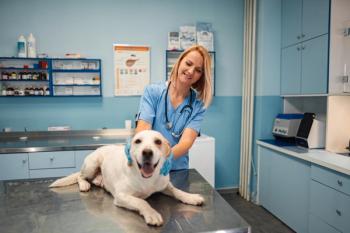The economy is often compared to a roller coaster—a continuous loop of climbs and drops. If that’s the case during normal times, COVID-19 has made the ride that much faster, steeper, and more unpredictable.
While we can’t predict the future, it looks like the current situation (or something like it) will be with us for some time. We don’t know exactly how long, but history and research show trends we can expect in the coming months, and point to actions we can take now to strengthen and build practices.
An uptick in business
The veterinary and animal health sectors generally reflect the same conditions as our broader national economy. We’ve all been on the same roller-coaster ride since March. Although we experienced deep lows from March to May, with veterinary practice revenue in some states down as much as 40% year over year, the current situation looks quite different. Currently, average practice revenue is up 15% to 25% year over year, depending on location.1 There are several reasons for this:
- Pent-up demand: Practices are seeing a surge in activity from clients who didn’t bring their pets in during the peak lockdown period from March through June.
- Increased disposable income: Clients may be spending more due to economic stimulus money they’ve received.
- More time spent at home: This often means more home-related spending, including on pets and veterinary care.
Increased pet adoptions: Myth or fact?
Another factor that might explain the surge in practice revenue is an increase in pet adoptions. In fact, adoption is the 1 factor that would have long-lasting implications on the profession. The other factors noted above point to just a temporary surge. But was there really an increase in adoptions?
Data from 24PetWatch2 and Best Friends Animal Society indicate that pet adoptions actually weren’t as strong as anecdotes and news stories have made them seem. Looking at the same time frame last year, adoptions are actually lower in 2020 than they were in 2019. This is driven in part by fewer animals being brought into shelters, meaning fewer cats and dogs up for adoption.
So, while adoption rates at shelters have increased, the total adoption trend likely isn’t as substantial as we may have thought.
The link to veterinary well-being
While a surge in business is good for practices, it’s also introducing new pain points as hospitals try to manage the demand. Plus, along with the added business, practices feel even busier to team members, who are taking on extra work due to social distancing and other new precautionary measures.
Burnout, stress, and compassion fatigue are very real concerns. Veterinary teams are stretched thin, trying to manage the effects of COVID-19 both at work and at home. And like many working parents, a lot of team members face additional layers of stress outside of work, including overseeing virtual learning for kids at home or finding childcare.
Supporting our teams is especially critical. One thing you can do is develop operational guidelines to streamline new protocols such as curbside care, social distancing, remote payment, and telemedicine. This will help relieve some of the pressure associated with the new workload. Communication and compassion also go a long way in showing team members that we know it’s not easy and we’re there for them.
The same is true for clients, who face similar stressors. Demonstrating empathy isn’t just kind; it’s essential for your business. And it’s an opportunity to get creative in showing clients you care. Some practices have started bringing snack carts out to clients waiting in the parking lot. Others have added more concierge services. Going the extra mile now can help strengthen those crucial client relationships we depend on.
Preparing for what’s ahead
It’s also important to remember this situation isn’t permanent. The demand surge we’re seeing now will taper off, although we do expect some lasting growth. This should offer some relief for busy team members, but it also indicates that our economy still isn’t strong. Many families still face precarious economic situations, and unemployment is high. Some households are facing difficult choices about housing, food, and other spending, including veterinary care.
This is the perfect time for practices to bolster for what’s ahead. The goal is to save as much as possible to protect and build your rainy-day fund, until we have a clearer picture of where the economy is heading. For the next 3 to 6 months, you may want to avoid making lasting changes, such as big equipment purchases, major employment decisions, or remodels.
The practice management and COVID-19 sections of AVMA’s website have a wealth of resources to help you fine-tune your business strategy, streamline operations, shore up cash flow, maximize purchasing power, and strengthen your competitive edge.
Take a deeper dive
If you’d like more information to plan for your practice’s future, here are 2 upcoming opportunities:
- AVMA’s Economic Summit (avma.org/EconSummit) takes place October 26-28 entirely online and will include an even deeper exploration of these and other key topics.
What recovery will look like
Seeing how the economy has responded to the spread of COVID-19, it’s no surprise that economic recovery will be strongly connected to epidemiological control of the virus. As long as COVID-19 cases, hospitalizations, and mortality continue to climb, there will be barriers to economic recovery.
The most likely scenario is that the economy could begin to resemble “back to normal” as early as the third or fourth quarter of 2021, but it could be as late as the end of 2023. When recovery does happen, we expect it to resemble a U-shaped pattern: We’ll have experienced a permanent loss of economic output (GDP level), but the economic trajectory ultimately will have resumed to what it was before COVID-19. Neither economic growth nor productivity is likely to be hurt in the long run. This is a lot like the 2008 recession—not the best-case scenario, but also not the worst. A less desirable possibility is a W-shaped recovery, which would mean another economic downturn.
How will we know we’re in a recovery? There’s no single measure, but a combination of key indicators could signal economic health. These include rises in consumer sentiment, manufacturing and housing market activity, and a decrease in unemployment.
Matthew Salois, PhD, is chief economist and director, and Rosemary Radich is the principal data scientist of the AVMA Veterinary Economics Division.
References
- Coronavirus (COVID-19) resources: veterinary industry impact tracker. VetSuccess. Accessed October 2, 2020. https://vetsuccess.com/resources/covid-19-resources/
- The 24Pet® ShelterWatch report: COVID-19 impact. 24PetWatch Pet Protection Services. Accessed October 2, 2020. https://www.24petwatch.com/shelterwatch







